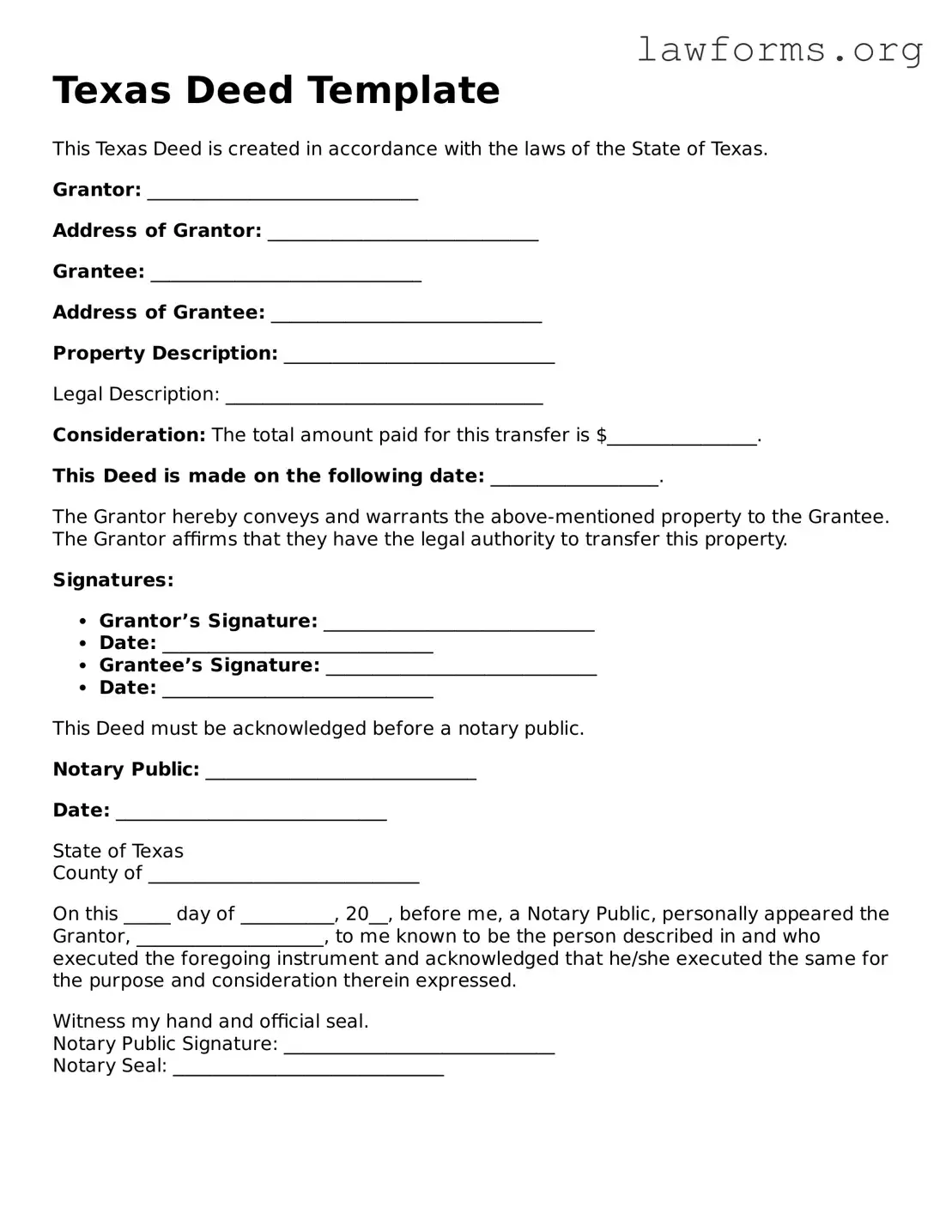Texas Deed Template
This Texas Deed is created in accordance with the laws of the State of Texas.
Grantor: _____________________________
Address of Grantor: _____________________________
Grantee: _____________________________
Address of Grantee: _____________________________
Property Description: _____________________________
Legal Description: __________________________________
Consideration: The total amount paid for this transfer is $________________.
This Deed is made on the following date: __________________.
The Grantor hereby conveys and warrants the above-mentioned property to the Grantee. The Grantor affirms that they have the legal authority to transfer this property.
Signatures:
- Grantor’s Signature: _____________________________
- Date: _____________________________
- Grantee’s Signature: _____________________________
- Date: _____________________________
This Deed must be acknowledged before a notary public.
Notary Public: _____________________________
Date: _____________________________
State of Texas
County of _____________________________
On this _____ day of __________, 20__, before me, a Notary Public, personally appeared the Grantor, ____________________, to me known to be the person described in and who executed the foregoing instrument and acknowledged that he/she executed the same for the purpose and consideration therein expressed.
Witness my hand and official seal.
Notary Public Signature: _____________________________
Notary Seal: _____________________________
